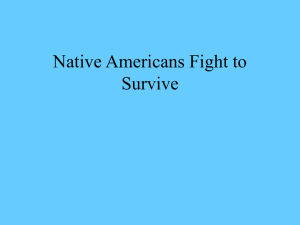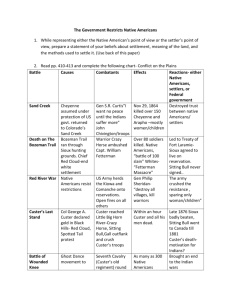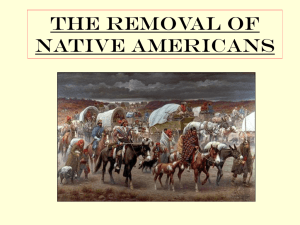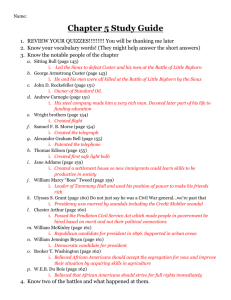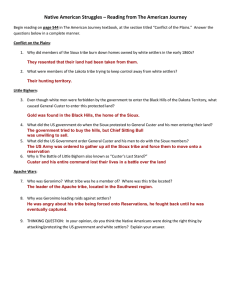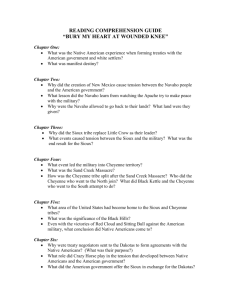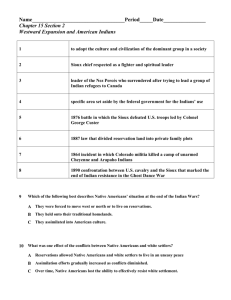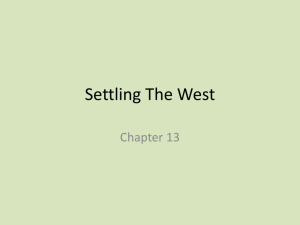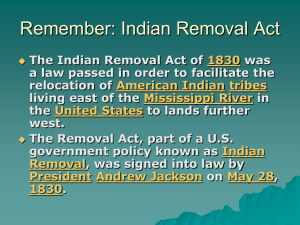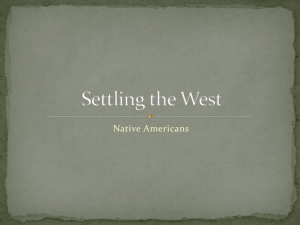native american w/s answers & notes
advertisement
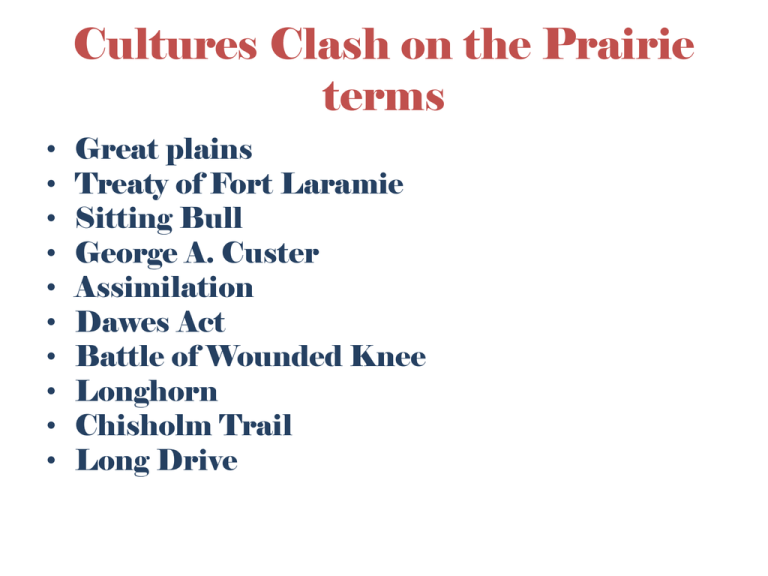
Cultures Clash on the Prairie terms • • • • • • • • • • Great plains Treaty of Fort Laramie Sitting Bull George A. Custer Assimilation Dawes Act Battle of Wounded Knee Longhorn Chisholm Trail Long Drive How did the discovery of gold affect settlement of the west? • 1858: discovery of gold in Colorado brought miners in the Great Plains region (Native American lands) • Establishment of railroads brought gold and silver back and forth • Great plains map Sand Creek Massacre • Nov. 29, 1864 • Cheyenne settled at Sand Creek reserve in Colorado; thought they were protected by U.S government • Colonel John Chivington & troops attacked Native Americans killing over 150 Cheyenne & Arapaho (mostly women & children • video Fort Laramie Treaty • 1868 • Required the Sioux to live on a reservation along Missouri River on the Wyoming Territory • Sioux assumed they would still be able to hunt on the grounds (Bozeman Trail) • Government closed the Bozeman Trail (hunting grounds) settlers kept moving in territory • Settlers & Native Americans continue to clash • Treaty broken Battle of Little Bighorn • 1876 • Colonel George A. Custer vs. Sioux and Cheyenne • Native Americans ready for battle; led by Sitting Bull, Gall, & Crazy Horse • Custer killed • Eventually Native Americans were beaten & surrendered • Sitting Bull forced to surrender in 1881 • video Dawes Act • 1887 • Intended to “Americanize” Native Americans • U.S government broke up reservations & gave 160 acres to head of household & 80 acres to unmarried adults • Government would sell rest of land to settlers Wounded Knee Creek • Dec. 28, 1890 South Dakota • U.S 7th cavalry took Sioux to a camp at Wounded Knee, SD • Native Americans had to surrender all weapons • Unknown shot was fired • 300 unarmed Sioux were killed Land lost over time • Map of Native American land lost over time
